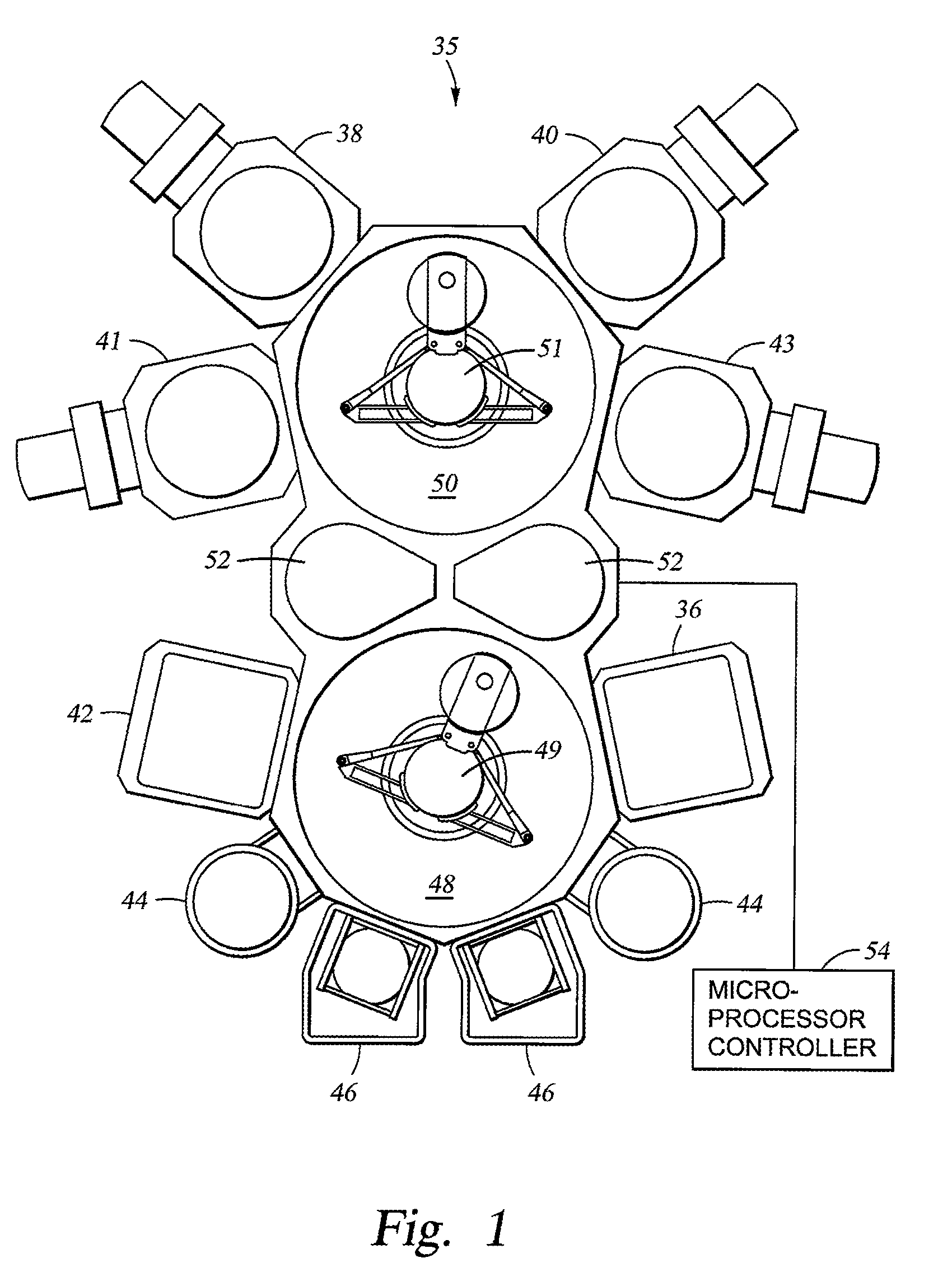Deposition methods for barrier and tungsten materials
a technology of barrier and tungsten materials, applied in the field of semiconductor device fabrication, can solve the problems of reducing the reliability of the overall circuit, difficult to integrate cobalt silicide processes into conventional manufacturing equipment, and cobalt agglomeration
- Summary
- Abstract
- Description
- Claims
- Application Information
AI Technical Summary
Benefits of technology
Problems solved by technology
Method used
Image
Examples
Embodiment Construction
[0034]Embodiments of the invention described herein provide methods and apparatus for forming a metal silicide layer in a deposition chamber or substrate processing system. One embodiment described below in reference to a physical vapor deposition (PVD) process is provided to illustrate the invention, and should not be construed or interpreted as limiting the scope of the invention. Aspects of the invention may be used to advantage in other processes, such as chemical vapor deposition, in which an anneal is desired for forming metal silicide layers.
[0035]FIG. 1 shows an integrated multi-chamber substrate processing system suitable for performing at least one embodiment of the physical vapor deposition, the chemical vapor deposition, and annealing processes described herein. The deposition and annealing processes may be performed in a multi-chamber processing system or cluster tool having a PVD chamber and a CVD chamber disposed thereon. One processing platform that may be used to ad...
PUM
| Property | Measurement | Unit |
|---|---|---|
| size | aaaaa | aaaaa |
| temperatures | aaaaa | aaaaa |
| vacuum pressure | aaaaa | aaaaa |
Abstract
Description
Claims
Application Information
 Login to View More
Login to View More - R&D
- Intellectual Property
- Life Sciences
- Materials
- Tech Scout
- Unparalleled Data Quality
- Higher Quality Content
- 60% Fewer Hallucinations
Browse by: Latest US Patents, China's latest patents, Technical Efficacy Thesaurus, Application Domain, Technology Topic, Popular Technical Reports.
© 2025 PatSnap. All rights reserved.Legal|Privacy policy|Modern Slavery Act Transparency Statement|Sitemap|About US| Contact US: help@patsnap.com



